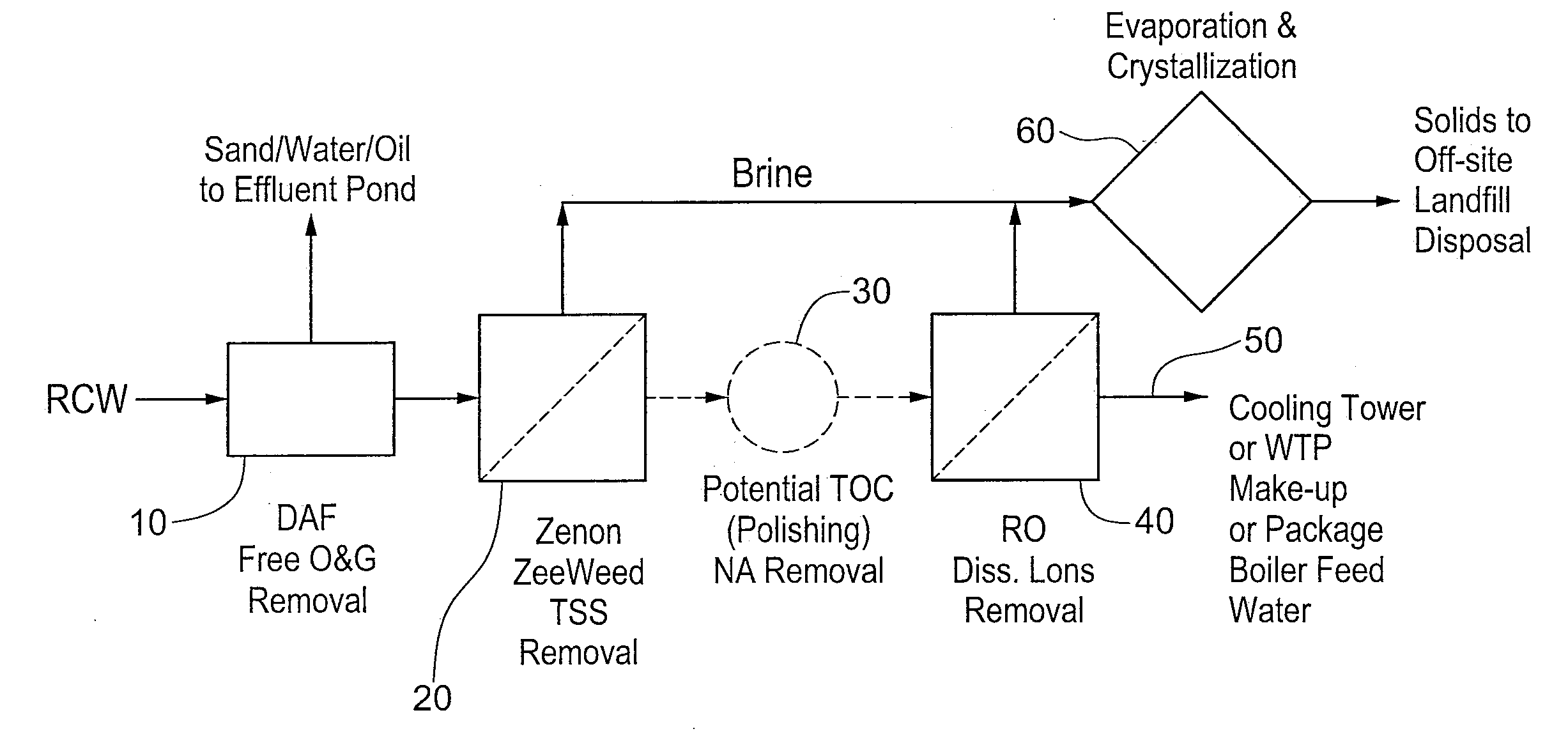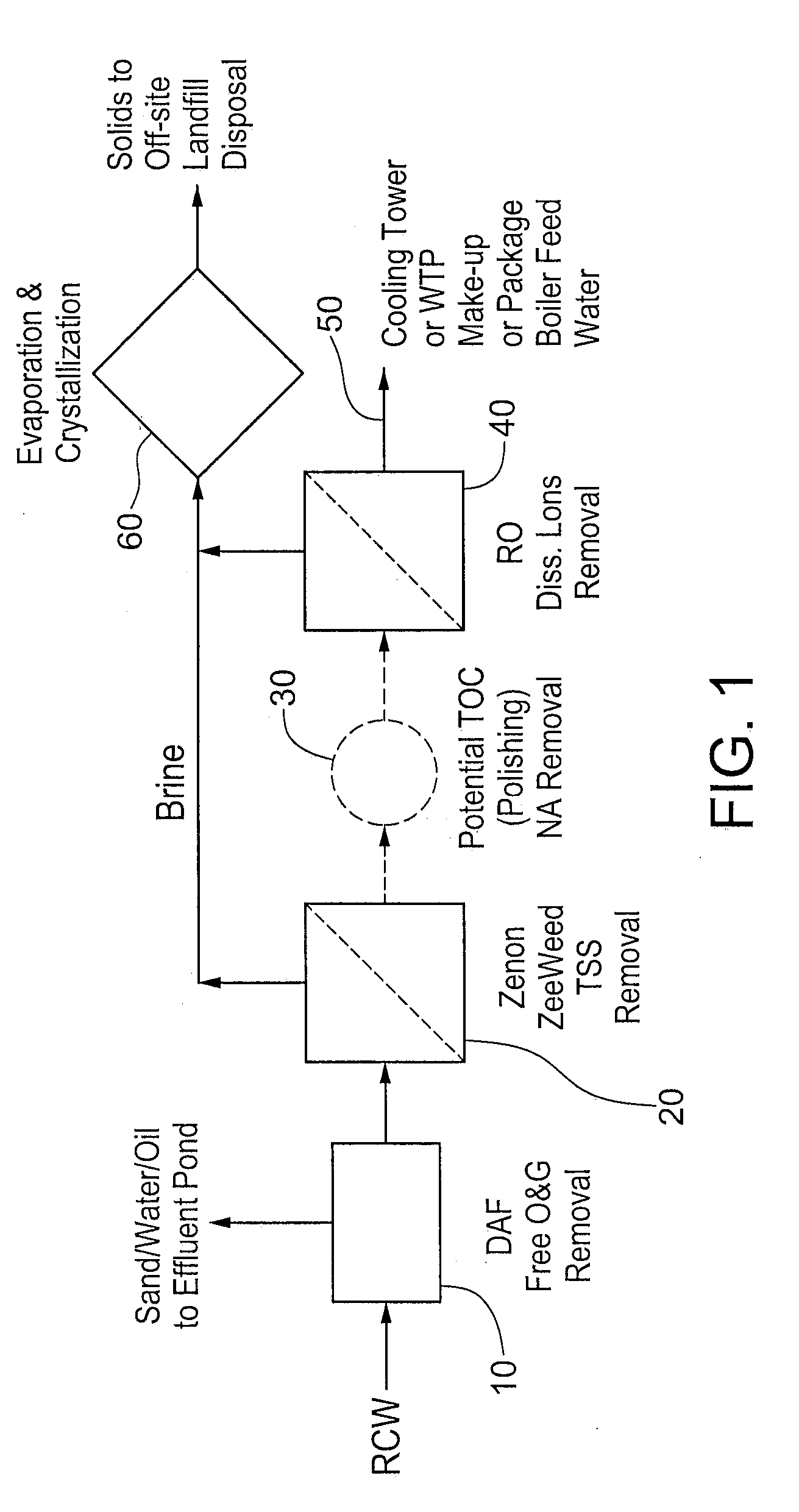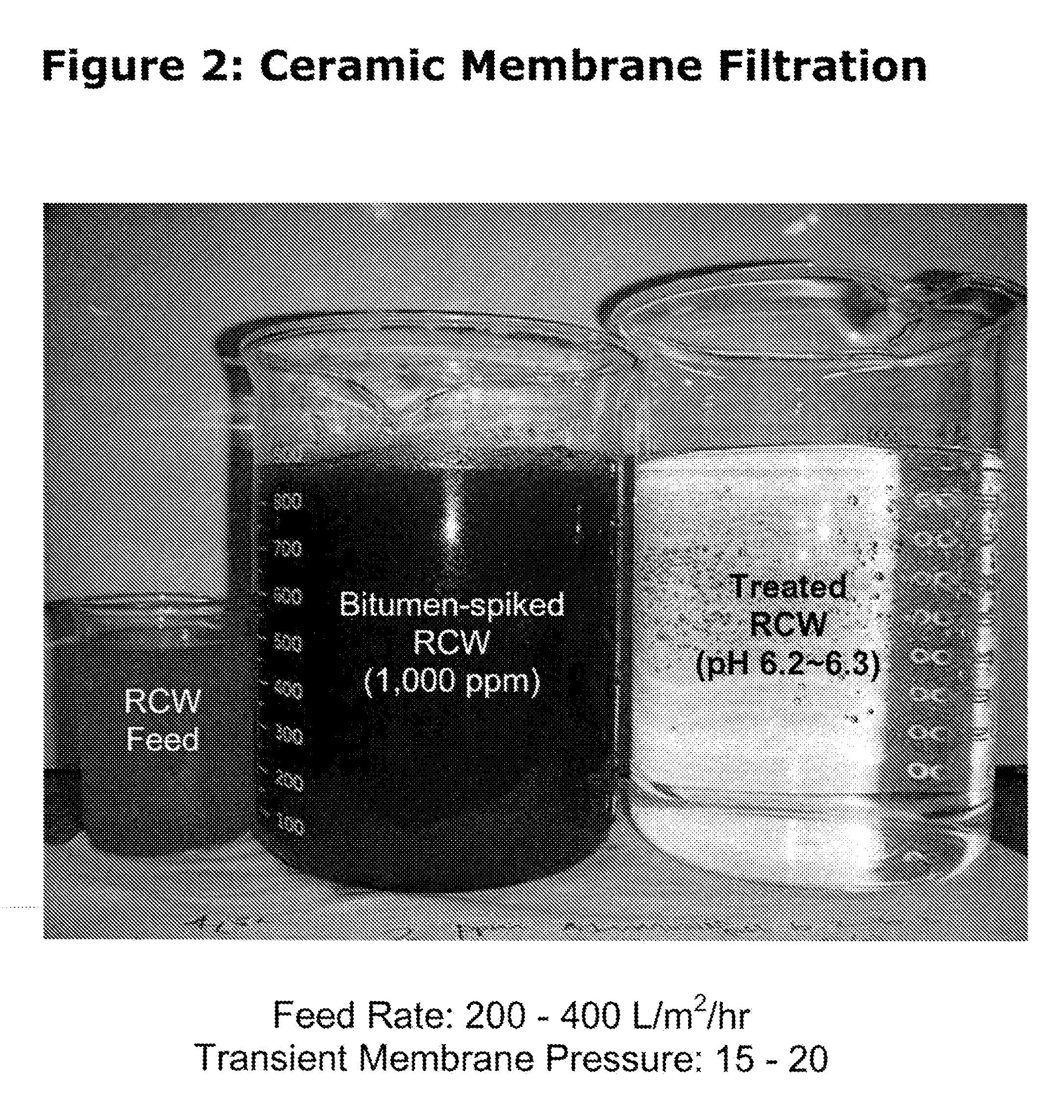Oil sands process water treatment for reuse
a technology of oil sands and process water, applied in the nature of treatment water, multi-stage water/sewage treatment, separation process, etc., can solve the problems of increasing operating and maintenance costs, degrading water quality, increasing salinity and sulfate concentration, etc., to reduce tss, reduce tss, and reduce tss.
- Summary
- Abstract
- Description
- Claims
- Application Information
AI Technical Summary
Benefits of technology
Problems solved by technology
Method used
Image
Examples
example 1
[0026]Oil sands process water from oil sand tailings pond, or recycle water or RCW, was spiked with 1,000 ppm bitumen to simulate an extreme oil sands process water supply. The bitumen-spiked RCW was then subjected to ceramic membrane filtration by passing the RCW through a 100 nm (i.e., 0.1 micrometer) pore size ceramic membrane at a feed rate of between about 200 to about 400 liters / m2 / hr. The transient membrane pressure was maintained at between about 15 to about 20 psi. FIG. 2 is a photograph showing RCW feed, bitumen-spiked RCW and ceramic membrane filtered or treated RCW. The pH of the treated RCW was approximately 6.2 to 6.3.
[0027]FIG. 3 shows that ceramic membrane filtration of bitumen-spiked recycle water results in a reduction to essentially zero ppm of both naphthenic acids and total petroleum hydrocarbon.
PUM
| Property | Measurement | Unit |
|---|---|---|
| pore size | aaaaa | aaaaa |
| pore size | aaaaa | aaaaa |
| pore size | aaaaa | aaaaa |
Abstract
Description
Claims
Application Information
 Login to View More
Login to View More - R&D
- Intellectual Property
- Life Sciences
- Materials
- Tech Scout
- Unparalleled Data Quality
- Higher Quality Content
- 60% Fewer Hallucinations
Browse by: Latest US Patents, China's latest patents, Technical Efficacy Thesaurus, Application Domain, Technology Topic, Popular Technical Reports.
© 2025 PatSnap. All rights reserved.Legal|Privacy policy|Modern Slavery Act Transparency Statement|Sitemap|About US| Contact US: help@patsnap.com



